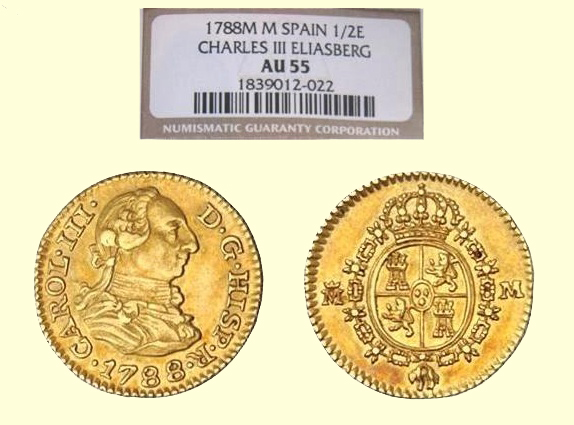Coin Grading
A value of a coin can be hugely affected by its condition. In the coin collecting (Numismatic) circles the condition of a coin is referred to as the “grade” of a coin. Being able to grade coins is a task in itself and it usually takes years to master. However there are books available to help with learning and understand how to grade coins. Also looking at trusted and reputable dealers websites to see their stock and assigned grade to each coin can help you gain an understanding.
Beware of damaged or over graded coins, some collectors especially novice collectors, like to believe their coins are higher grade than they actually are. If they try to sell their coin as for example an EF (Extra Fine) and you buy it for EF money and you try and sell it a few years time to a dealer or through an auction house and you are told it is only a VF (Very Fine) you will no doubt be out of pocket and your investment will have been a bad one. So to begin with it is a good idea to buy from a reputable dealer or auction house.
Damaged coins, that being coins that have been cleaned, plated or pierced (holed) or which have been mounted in a pendant or a broach in the past will be worth considerably less.
NEVER CLEAN YOUR COINS! As you will ruin the value of them. If in doubt ask an expert or if a coin has been dug or found contact a museum.
Your main British coin grades are:
- FINE
- VERY FINE
- EXTREMELY FINE
- UNCIRCULATED
However you do sometimes get in between grades like:
- aFine (Almost Fine)
- gFine (Good Fine)
- aVF (Almost Very Fine)
- gVF (Good Very Fine)
- aEF (Almost Extra Fine)
- gEF (Good Extra Fine)
- aUnc (Almost Uncirculated)
- BU (Brilliant Uncirculated)
Occasionally grades below of “GOOD”, “FAIR” or
“POOR”, are given to coins below FINE. Anything below a fine grade will be quite worn and most coin collectors only collect coins which are fine or above. Most coins below fine (unless a really rare coin) will only usually be worth their scrap metal price.
PROOF: coin is a is a coin struck using specially prepared dies. This makes the design of the coin clearer and sharper compared with a normal (business) strike.
In the US, coin grading is based on a Sheldon scale. Coins grade from 1 (being the lowest grade) up to 70 (being the top grade).
- PO-1 (Poor) = Just barely identifiable.
- FR-2 (Fair) = Very worn but identifiable.
- AG-3 (About Good) = Mostly worn but some detail can be seen.
- G-4, G-6 (Good) = Most of the letters and edge is worn but readable.
- VG-8, VG-10 (Very Good) = Edge and rims are complete, the detail is flat but the lettering is fully readable.
- F-12, F-15 (Fine) = Detail is starting to show some raised areas and recess and all the lettering is fully readable.
- VF-20, VF-30, VF-35 (Very Fine) = Detail is starting to show more raised areas and recess and all the lettering is sharp.
- EF-40, EF-45 (Extremely Fine) = The detail visible and the higher points are a little worn.
- AU-50, AU-53, AU-55, AU-58 (Almost Uncirculated) = The detail is fully visible with only a little wear to some of the higher points.
- MS-60, MS-61, MS-62, MS-63, MS-64 (Uncirculated) = Starting with MS-60 will have full detail and no wear but they may be weakly struck and show little luster or a lot of bag marks. However a coin graded MS-64 will be very nice with only possibly a small area of a weak strike or very tiny mark/s.
- MS-65, MS-66, MS-67, MS-68, MS-69 (Brilliant Uncirculated) = It is very hard to find older coins (100 years plus) which are graded M65 or above. This is due to the fact that a coin in these grades will be fully struck, display full details and lustre and have very few if any noticible marks even under magnification.
- MS-70 (Perfect) = Absolute perfection. An MS-70 coin is hard to come by and they tend to be more modern coins as a coin in this grade should have no faults even under magnification.
A word of warning though UK and European grading is slightly different and many consider UK and European grading to be slightly stricter.
1788 Charles II half Escudo. Graded AU-55 by NGC.
In the US there are companies called TGP (Third Party Grading companies) and these companies will grade and slab (encapsulate a coin in a hard plastic case with a grade and description for a fee). These grading companies usually guarantee the coin they grade to be genuine, therefor making them a safer buy for a new collector.
The main three recognised US grading companies are:
- PCGS = Professional Coin Grading Service
- NGC = Numismatic Guaranty Corporation
- ANACS = American Numismatic Association Certification Service

